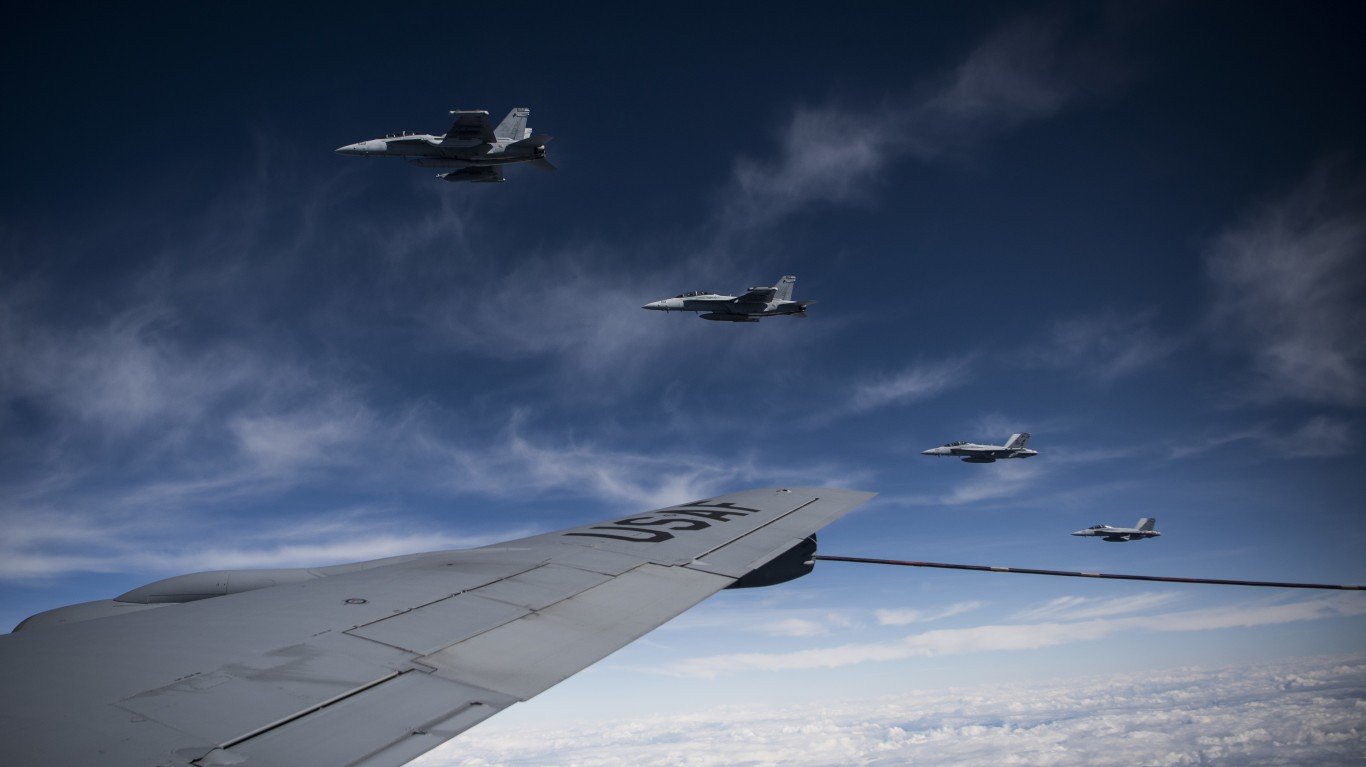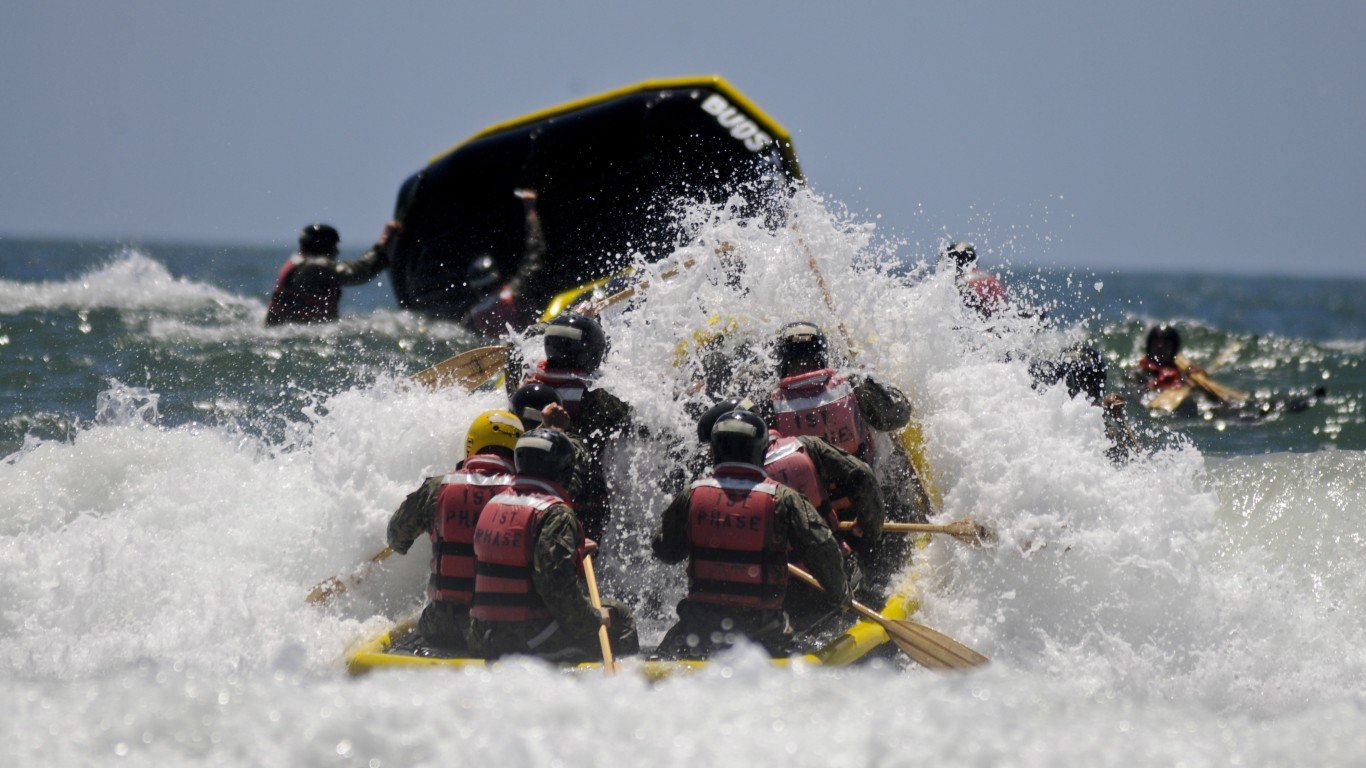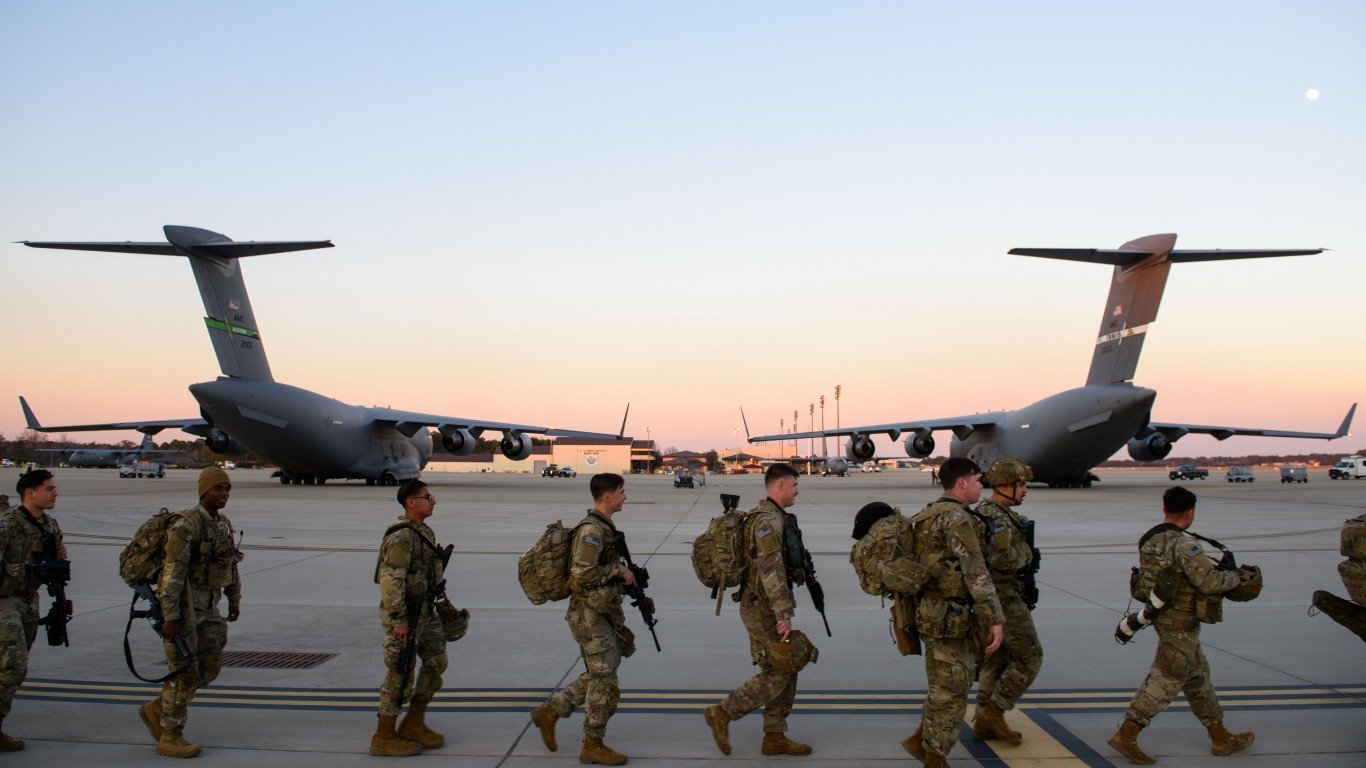

There are many reasons why the United States military is considered the best on the planet. Not only does it have the highest-funded military, but it also has technological superiority to many other nations as well as having one of the best-trained forces across all of its branches. It is always beneficial to have a strong military like the United States, but even more so during times of rising geopolitical tensions across the globe.
In all six of its branches, from the Army, the Navy, and the Coast Guard, to the Air Force, Marines, and Space Force, the U.S. military has a comprehensive training program in place. There are different tiers of training for each operational unit, such as the Green Berets, Navy SEALs, Rangers, and Delta Force.
24/7 Wall St. reviewed information on Military OneSource, a Department of Defense-funded information resource for members of the armed services to determine where the U.S. military trains its forces across all branches. We listed the military bases alphabetically and included the training conducted at each base and for which branch. There are multiple bases where a wide variety of training occurs and others where it is similar training but at different locations.
Many of the military installations on the list house multiple training facilities for multiple units and even multiple military branches. As some units need to complete pararescue training, which is a prerequisite for more specialized operators, there is some crossover training between units at certain bases. (Also see, the largest military base in each state.)
Practically all of the basic training is standardized down to the day for whatever set duration each branch requires. Certain branches need more space for their basic training due to the sheer number of recruits. This is true of the Army as well as the Marine Corps. However, just because these recruits may train in different bases does not mean they are receiving different training. (Here are the 11 newest US military bases.)
Here are the training bases used by the U.S. military
Camp Geiger, North Carolina

- Branch: Marine Corps
- Type of training: Infantry Training Battalion: 59 days
Camp Lejeune, North Carolina

- Branch: Marine Corps
- Type of training: Marine Raiders Training: 9 months
Camp Pendleton, California

- Branch: Marine Corps
- Type of training: Marine Combat Training Battalion: 29 days; Force Recon Training: 9 weeks
Cape May, New Jersey
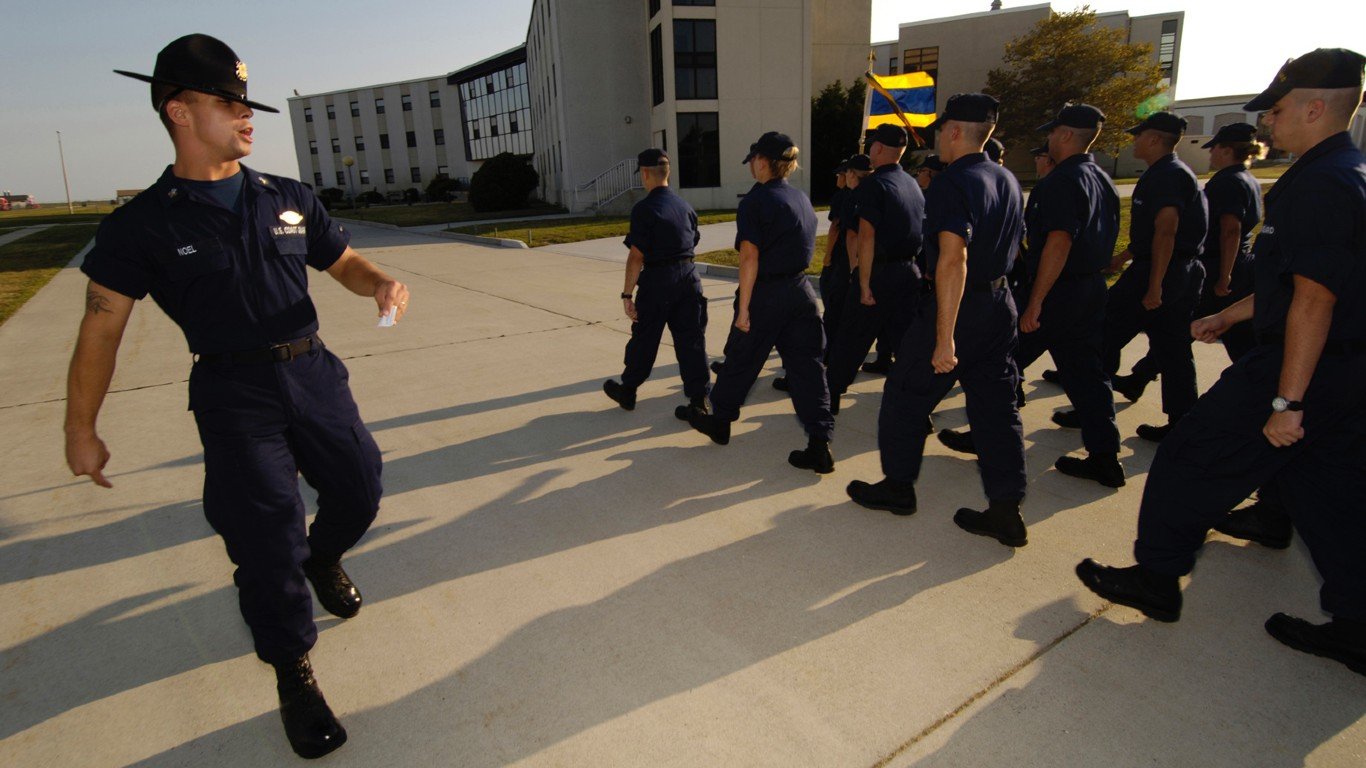
- Branch: Coast Guard
- Type of training: Basic Training: 8 weeks
Fairchild Air Force Base, Washington
- Branch: Air Force
- Type of training: Air Force Special Operations Weathermen Training: 138 weeks
Fort Benning, Georgia
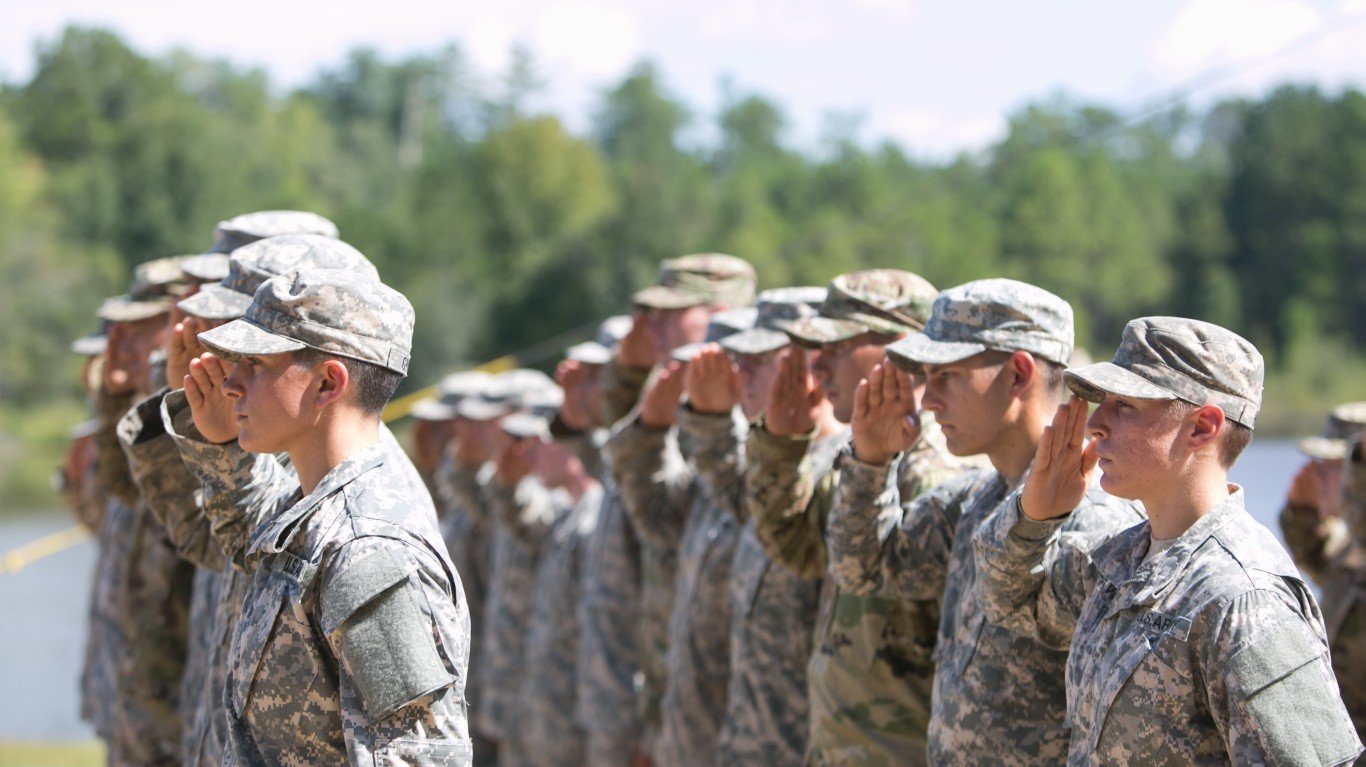
- Branch: Army
- Type of training: Basic Training: 10 weeks
Fort Bragg, North Carolina

- Branch: Army, Air Force
- Type of training: Army Green Berets Training: 61 weeks; Delta Force Training: 6 months; Air Force Pararescue Specialists Training: 70 weeks
Fort Campbell, Kentucky
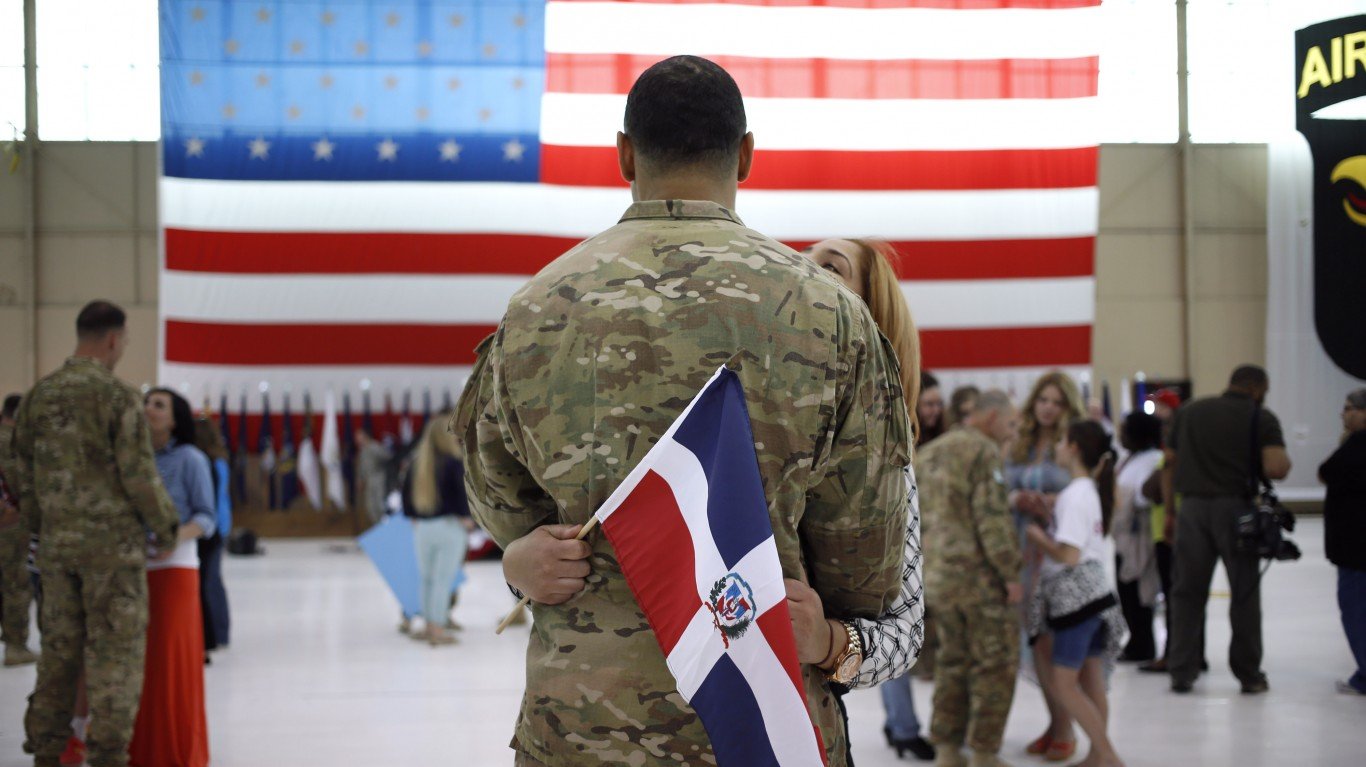
- Branch: Army
- Type of training: SOAR Night Stalkers Training: 6 weeks
Fort Jackson, South Carolina
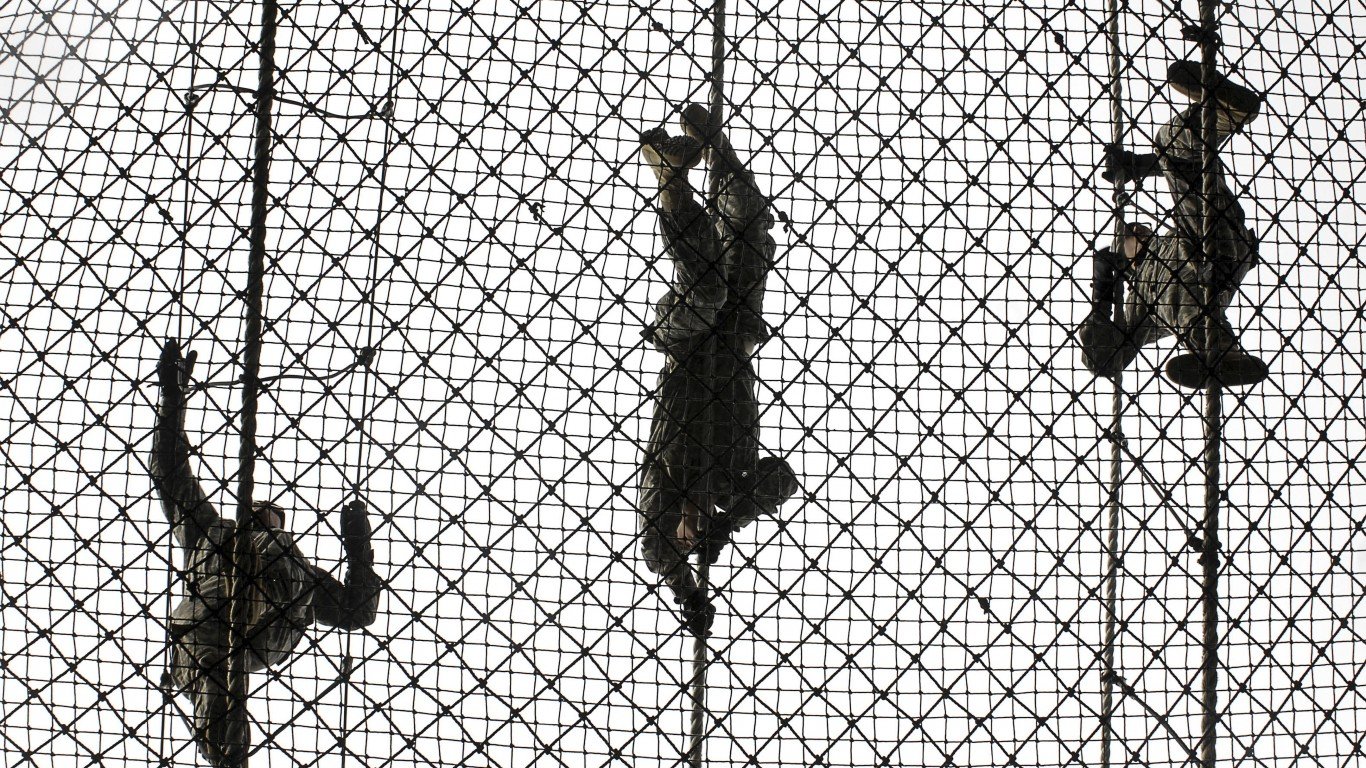
- Branch: Army
- Type of training: Basic Training: 10 weeks
Fort Knox, Kentucky
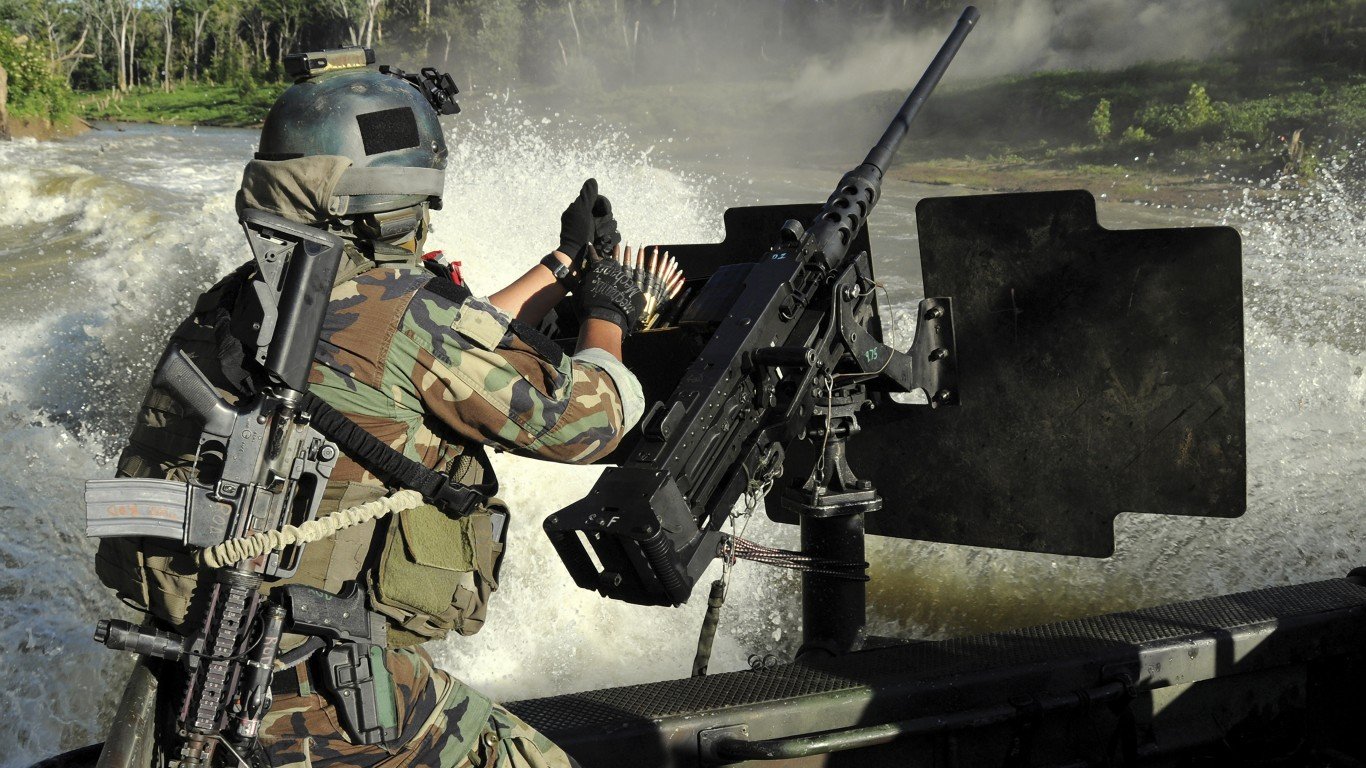
- Branch: Army
- Type of training: Basic Training: 10 weeks
Fort Leonard Wood, Missouri
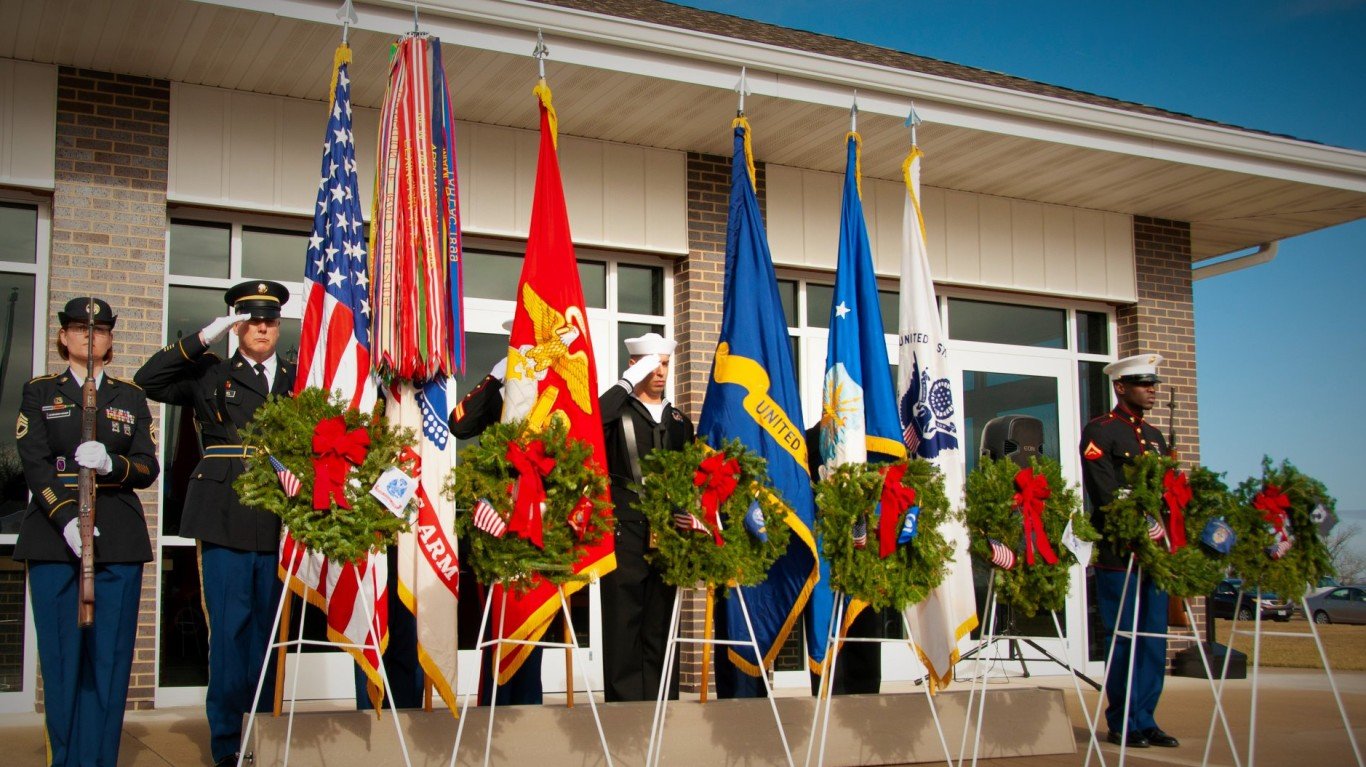
- Branch: Army
- Type of training: Basic Training: 10 weeks
Fort Sill, Oklahoma

- Branch: Army
- Type of training: Basic Training: 10 weeks
Great Lakes, Illinois

- Branch: Navy
- Type of training: Basic Training: 7 weeks
Joint Base San Antonio
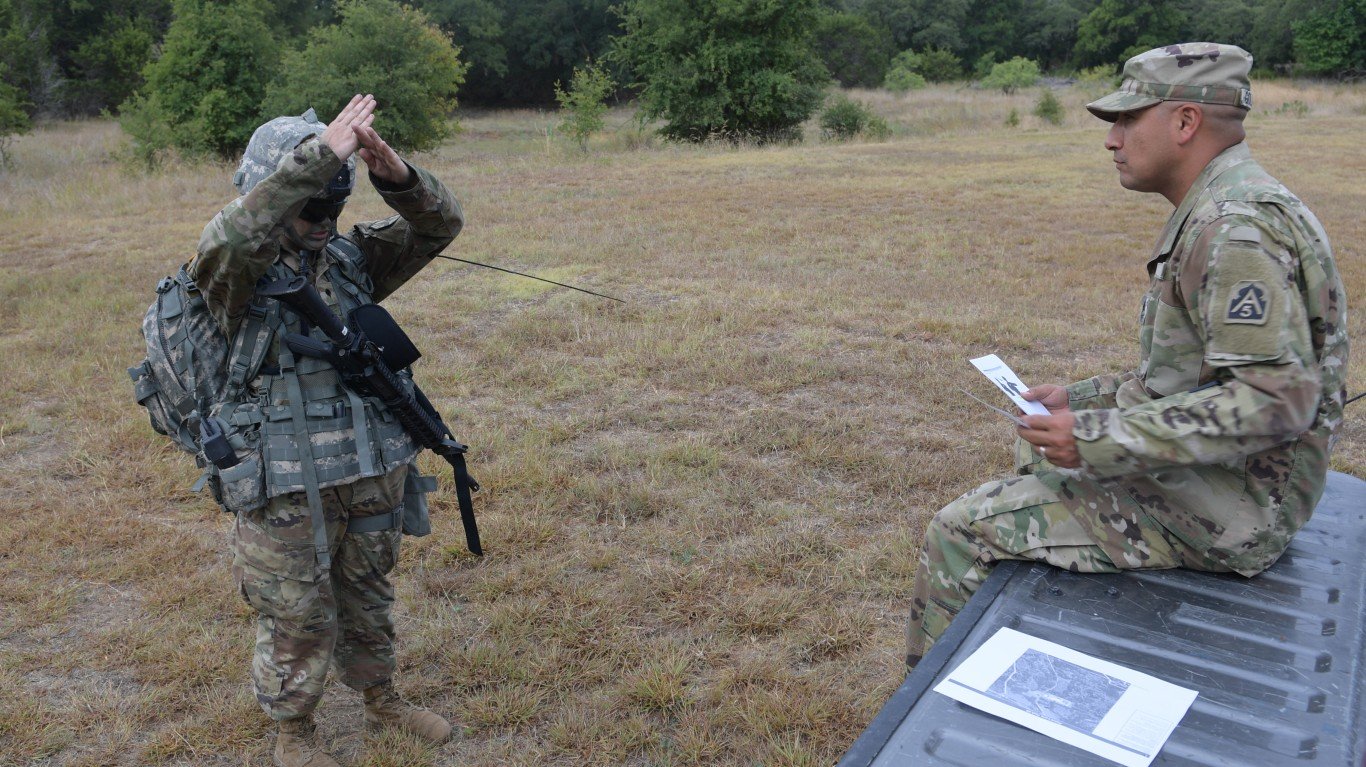
- Branch: Space Force
- Type of training: Basic Training: 6 weeks
Lackland Air Force Base, Texas
- Branch: Air Force
- Type of training: Basic Training: 8-and-a-half weeks; Air Force Combat Controller Training: 94 weeks
Marine Corps Recruit Depot in Parris Island, South Carolina
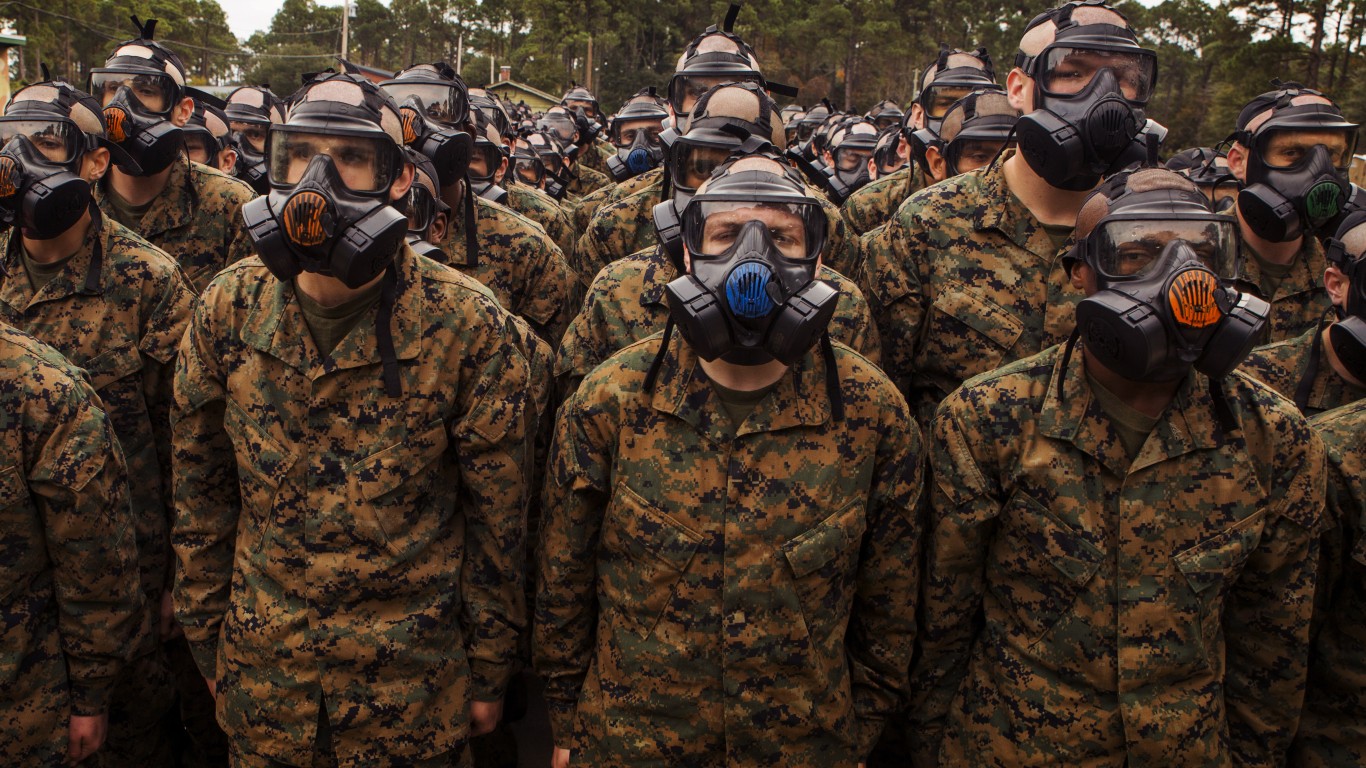
- Branch: Marine Corps
- Type of training: Basic Training: 12 weeks
Marine Corps Recruit Depot in San Diego, California
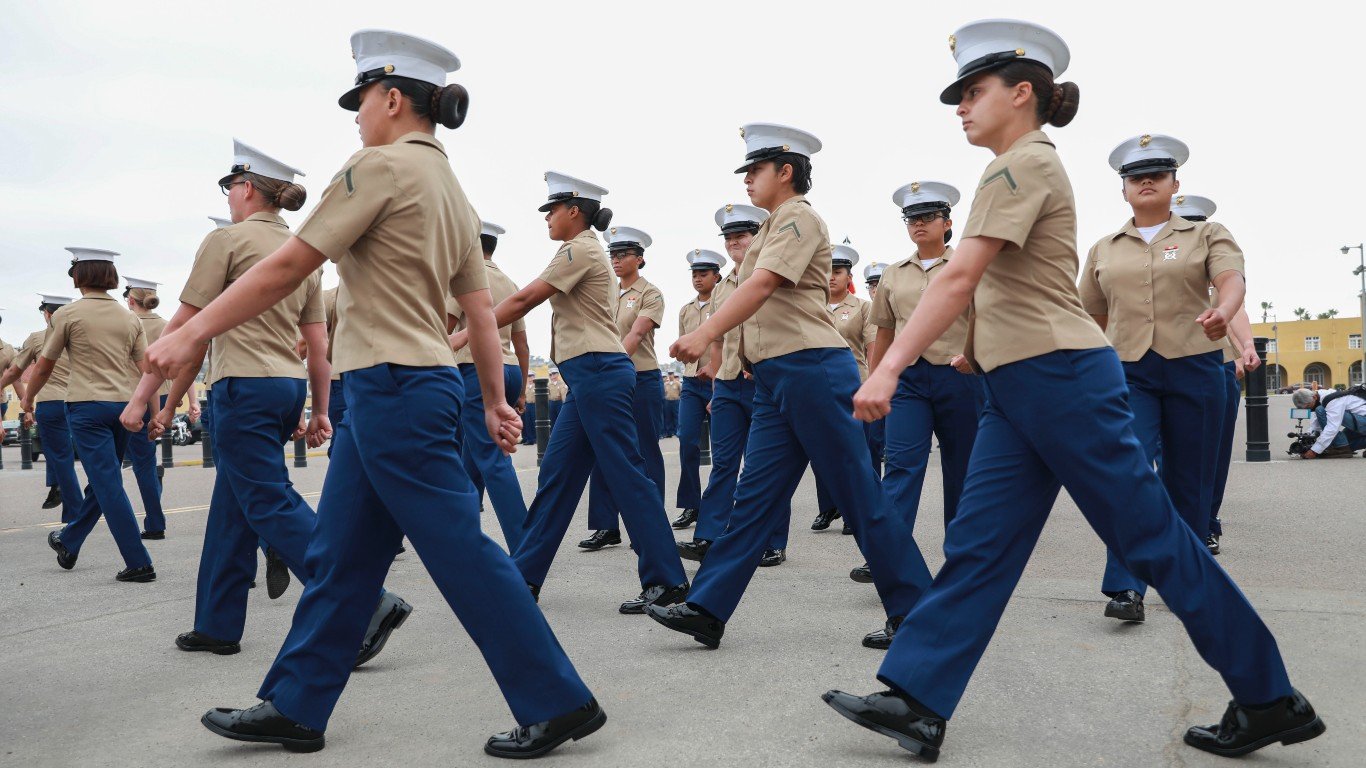
- Branch: Marine Corps
- Type of training: Basic Training: 12 weeks
Naval Special Warfare Training Center Coronado, California
- Branch: Navy
- Type of training: Navy SEALs Training: 12+ months
Naval Station Newport, Rhode Island
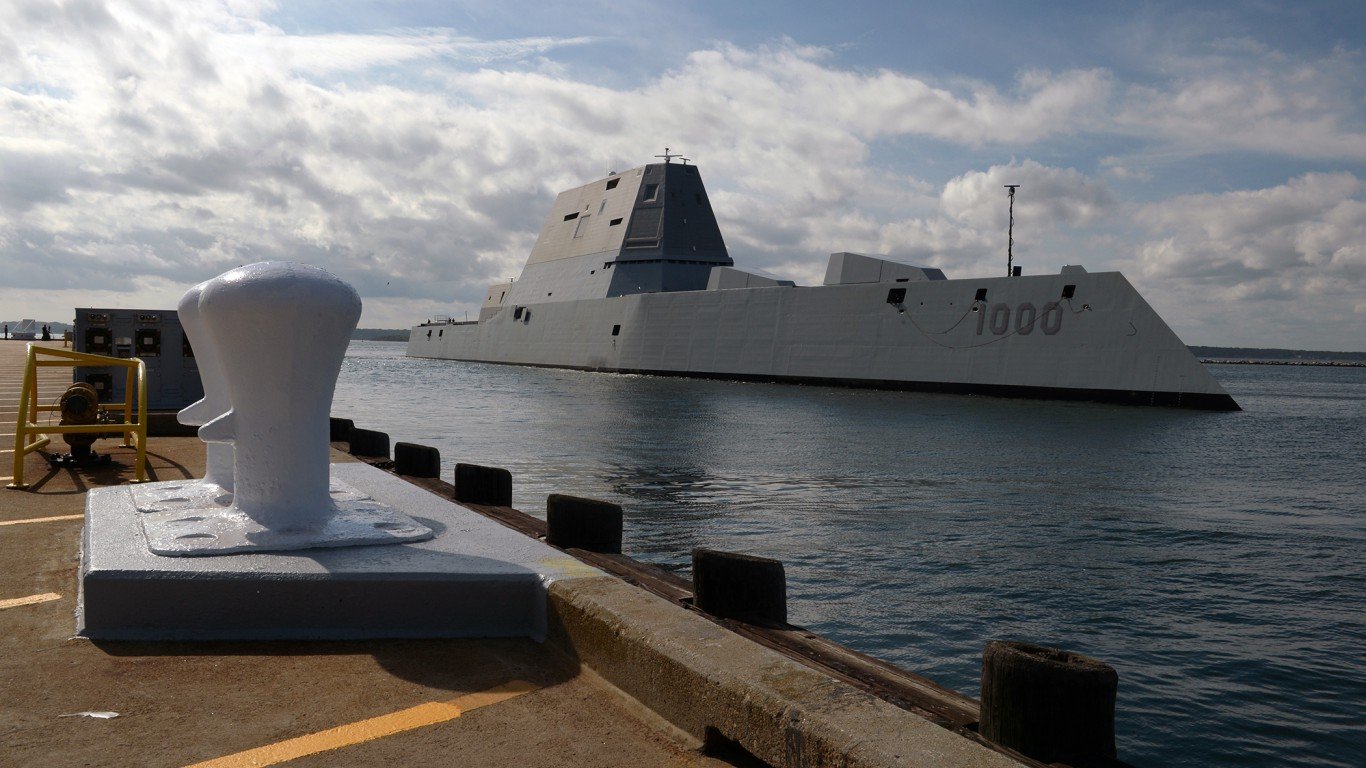
- Branch: Navy
- Type of training: Navy Officer Candidate School Training: 13 weeks
Quantico, Virginia

- Branch: Marine Corps
- Type of training: Marine Officer Candidate School Training: 6 months
Yuma Proving Grounds, Arizona
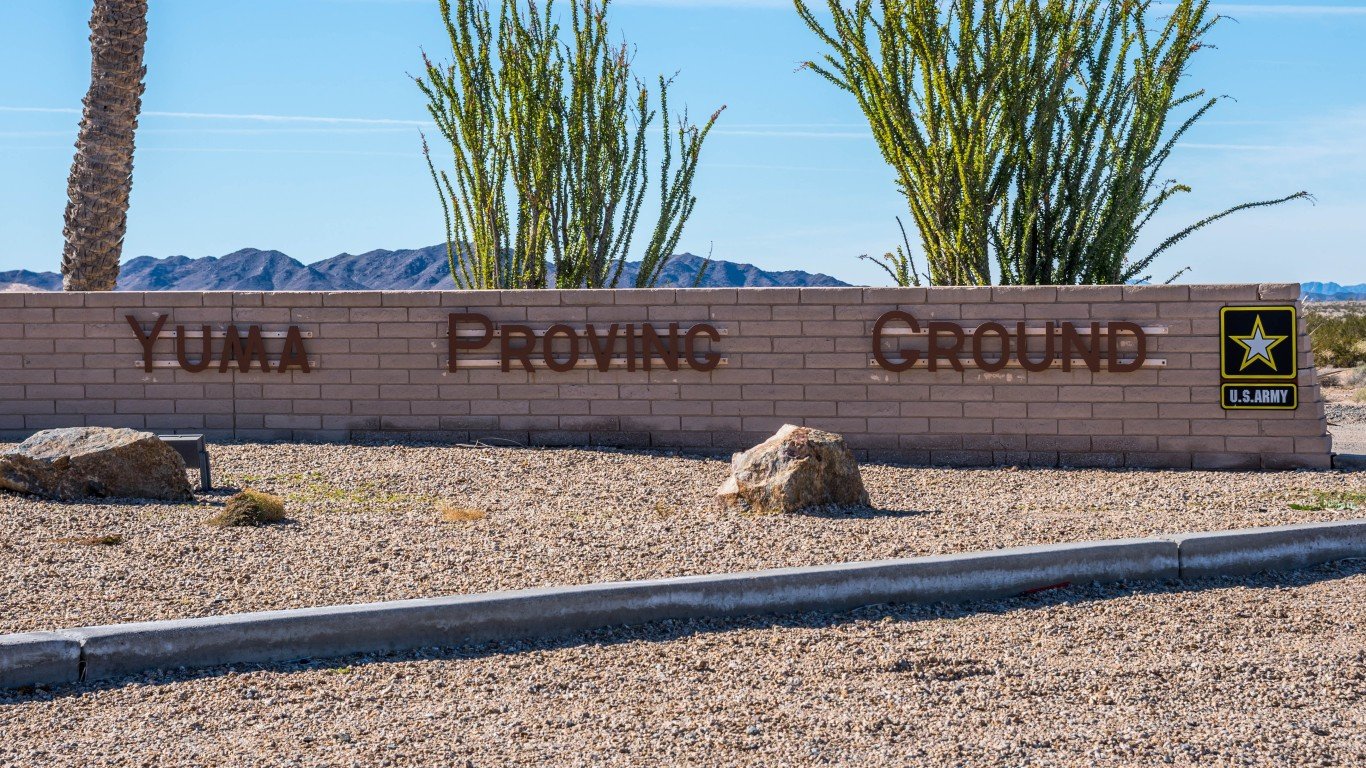
- Branch: Air Force
- Type of training: Air Force Pararescue Specialists Training: 70 weeks
Smart Investors Are Quietly Loading Up on These “Dividend Legends” (Sponsored)
If you want your portfolio to pay you cash like clockwork, it’s time to stop blindly following conventional wisdom like relying on Dividend Aristocrats. There’s a better option, and we want to show you. We’re offering a brand-new report on 2 stocks we believe offer the rare combination of a high dividend yield and significant stock appreciation upside. If you’re tired of feeling one step behind in this market, this free report is a must-read for you.
Click here to download your FREE copy of “2 Dividend Legends to Hold Forever” and start improving your portfolio today.
Thank you for reading! Have some feedback for us?
Contact the 24/7 Wall St. editorial team.
